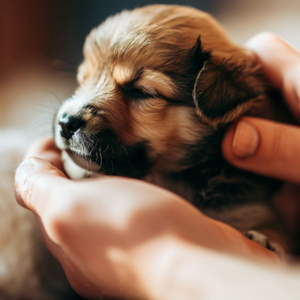How To Care For A Pet: Nurturing Their Physical Well-being
As a pet owner, it is important to provide your furry friends with the best possible care, including their physical well-being. This means providing them with a balanced diet, regular exercise, and plenty of playtime.

Maintaining a Balanced Diet and Proper Nutrition
One of the most important things on how to care for a pet’s physical well-being is to maintain a balanced diet and proper nutrition. This means feeding them food that is specifically designed for their species, age, and health needs.
Nutritional Needs of Dogs
Puppies: Puppies need a diet that is high in protein and fat to support their rapid growth and development. They also need essential vitamins and minerals, such as calcium and phosphorus, to build strong bones and teeth.
Adult dogs: Adult dogs need a diet that is lower in calories and fat than puppies. This is because they are no longer growing as quickly and they are more prone to weight gain. However, adult dogs still need a balanced diet that contains all of the essential nutrients.
Senior dogs: Senior dogs may need a diet that is specially formulated for their age and health needs. As dogs get older, they may become less active and they may develop health problems, such as arthritis or kidney disease. A senior dog food can help to meet the specific nutritional needs of older dogs and can help to keep them healthy and active.
Nutritional Needs of Cats
Cats are obligate carnivores, which means that they need to eat meat to get the nutrients they need. Cats need a diet that is high in protein and low in carbohydrates. Carbohydrates are not essential for cats and too many carbohydrates can lead to weight gain and other health problems.
Cats are also known for being picky eaters. It is important to find a food that they like and that meets their nutritional needs. There are a variety of different cat foods available, so you should be able to find one that your cat will enjoy.
Feeding Tips and Dietary Considerations
Here are some general feeding tips and dietary considerations for both dogs and cats:
- Feed your pet a high-quality diet that is specifically designed for their species, age, and health needs.
- Avoid feeding your pet table scraps or human food. Human food is not nutritionally balanced for pets and it can lead to weight gain and other health problems.
- Make sure your pet has access to fresh, clean water at all times.
- Feed your pet at regular times and avoid overfeeding.
- Monitor your pet’s weight and body condition and adjust their food intake as needed.
If you have any questions or concerns about your pet’s diet or nutrition, be sure to talk to your veterinarian. They can help you to create a personalized feeding plan for your pet that meets their individual needs.
Additional Tips
- If you are switching your pet to a new food, do so gradually by mixing the new food in with their old food over a period of 7-10 days.
- If your pet has any health conditions, such as diabetes, kidney disease, or allergies, be sure to choose a food that is specifically formulated for their needs.
- If you are unsure about how much to feed your pet, be sure to consult with your veterinarian.
By following these tips, you can help to ensure that your pet is getting a balanced diet and proper nutrition. This will help them to stay healthy and active throughout their life.
The Importance of Regular Exercise and Playtime
In addition to a balanced diet, regular exercise is also essential for your pet’s physical well-being. Exercise helps to keep your pet’s weight in check, reduces their risk of developing health problems, and helps to keep them mentally stimulated.
Here are some tips for building an exercise routine for dogs:
- Start slowly: If your dog is not used to exercising, start with short walks and gradually increase the duration and intensity of their workouts.
- Make it fun: Exercise should be enjoyable for both you and your dog. Try to find activities that your dog enjoys, such as playing fetch or going for a hike.
- Be patient: It may take some time for your dog to get used to a new exercise routine. Be patient and consistent, and your dog will eventually get the hang of it.
Here are some tips for keeping cats active:
- Provide plenty of toys: Cats love to play, so make sure they have plenty of toys to keep them entertained.
- Hide food: Cats are natural hunters, so they love to play with food. Try hiding their food around the house so they have to work for it.
- Take them for walks: If your cat is comfortable with being outside, you can take them for walks on a leash.